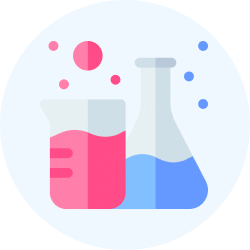Chemistry Exam > Chemistry Videos > Inorganic Chemistry > Structure & Functions of Hemoglobin & Myoglobin
Structure & Functions of Hemoglobin & Myoglobin Video Lecture | Inorganic Chemistry
FAQs on Structure & Functions of Hemoglobin & Myoglobin Video Lecture - Inorganic Chemistry
| 1. What is the structure of hemoglobin and myoglobin? |  |
Ans. Hemoglobin and myoglobin are both globular proteins. Hemoglobin consists of four polypeptide chains, two alpha chains, and two beta chains, each containing a heme group. Myoglobin, on the other hand, consists of a single polypeptide chain with a heme group at its center.
| 2. What is the function of hemoglobin and myoglobin? |  |
Ans. Hemoglobin is responsible for carrying oxygen from the lungs to the body's tissues and transporting carbon dioxide from the tissues back to the lungs. Myoglobin, on the other hand, primarily functions as an oxygen storage protein in muscle cells, providing oxygen to the working muscles during periods of high demand.
| 3. How does the structure of hemoglobin enable its function? |  |
Ans. The structure of hemoglobin allows it to bind to oxygen molecules in the lungs and release them in the body's tissues. The heme groups in each hemoglobin subunit contain an iron ion that can bind to an oxygen molecule. The quaternary structure of hemoglobin allows for cooperative binding, where the binding of one oxygen molecule enhances the binding of subsequent molecules.
| 4. What is the significance of the heme group in hemoglobin and myoglobin? |  |
Ans. The heme group in both hemoglobin and myoglobin is essential for their oxygen-binding function. The iron ion within the heme group can reversibly bind to an oxygen molecule, allowing the proteins to transport and store oxygen. The structure of the heme group also contributes to the red color of blood.
| 5. How do hemoglobin and myoglobin differ in their oxygen-binding properties? |  |
Ans. Hemoglobin exhibits cooperative binding, meaning that its affinity for oxygen increases as oxygen molecules bind to its subunits. This allows hemoglobin to efficiently pick up oxygen in the lungs and release it in the tissues. Myoglobin, on the other hand, has a higher affinity for oxygen and does not exhibit cooperative binding. It serves as a reservoir for oxygen in muscle cells, allowing them to extract oxygen more readily from the blood.
Related Searches




















